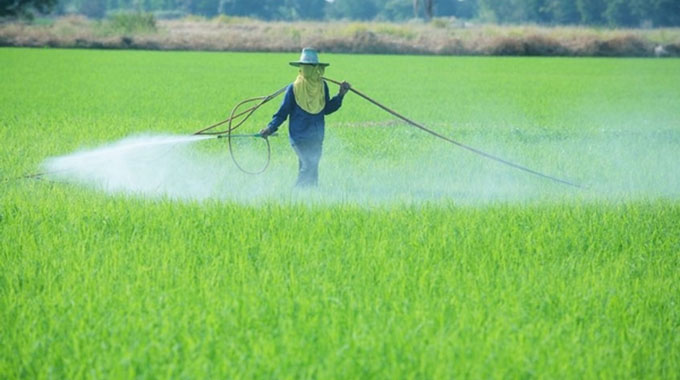
The Rhodesia Herald, 6 January, 1966
MANUFACTURERS and distributors of pesticides are reminded that their products must be labelled in terms of regulations which came into force on January 1, says a statement issued by the Chief of Plant Protection, Mr J.A. Whellan.
Under these regulations, pesticides must be clearly labelled with the label showing what the pesticide is, and how much of it is present.
The method and purpose of use must also be indicated and a warning given of the risks run if the pesticide is not properly used.
In the case of particularly toxic pesticides, such as parathion, the remedial steps which should be taken in case of accidental poisoning, must also be shown.
It is not necessary to submit labels for approval, except where there is doubt over the recognition of the name of the pesticide when the label may be submitted to the Secretary of Agriculture for confirmation.
Since the war (WWII), the use of pesticides on crops, in gardens and in the home has greatly increased, says the statement.
The hazards attendant on their use were not realised at first, but in recent years this aspect has received ever-increasing recognition.
These dangers are vividly portrayed in the late Rachel Carson’s book, “Silent Spring.”
“The Government has had this question under consideration for some time,” the statement continues.
“The problem is not quite the same in Rhodesia as in the intensively developed countries of the northern hemisphere. Applications of pesticides are usually localised and on a relatively small scale.
“Blanket spraying of large areas from the air, which poses the greatest danger, is almost unknown here. Most of the country is uncultivated and has never been subject to the pesticides at all.
“Therefore, the problem of toxic residue is far less and the likelihood of serious interferences with wild life through food chains is small… The chief hazard is therefore to the user, and here the danger is often due to ignorance. At first, insecticides such as DDT and BHC were genuinely considered to be harmless to man and animals, and completely safe to use.
“The Government considers it is in the public interest to do what it can to dispel this illusion.”
LESSONS FOR TODAY
• Labelling products is a sign of responsibility to end-users and the environment.
• It is crucial that manufacturers of pesticides give adequate information about their product, to help consumers make an informed decision. Proper labelling helps clarify a number of issues.
• Signal word: How toxic is the product? Ingredients: What’s in the product?
• Precautionary statements: How can the product be used safely? First aid information: what should I do if it gets into my eyes, mouth, lungs or on my skin?
• Environmental hazards: What special restrictions are placed on this product to protect the environment?
• Personal protective equipment (PPE): What should I wear? Should I use gloves when I use this product? Directions for use: How and where should I use the product?
• Storage and disposal: How does the product have to be stored? What should I do with leftovers that I don’t need? Manufacturer’s contact information: How can I get in touch with the company?
• Messages on labels must be simple and direct, and multi-lingual.
For historical information contact:
Zimpapers Knowledge Centre at Herald House on:
+263 8677 004323;
+263 0242 795771
E-mail: [email protected]
